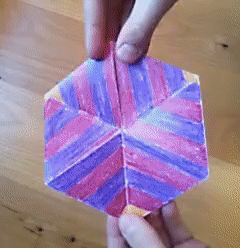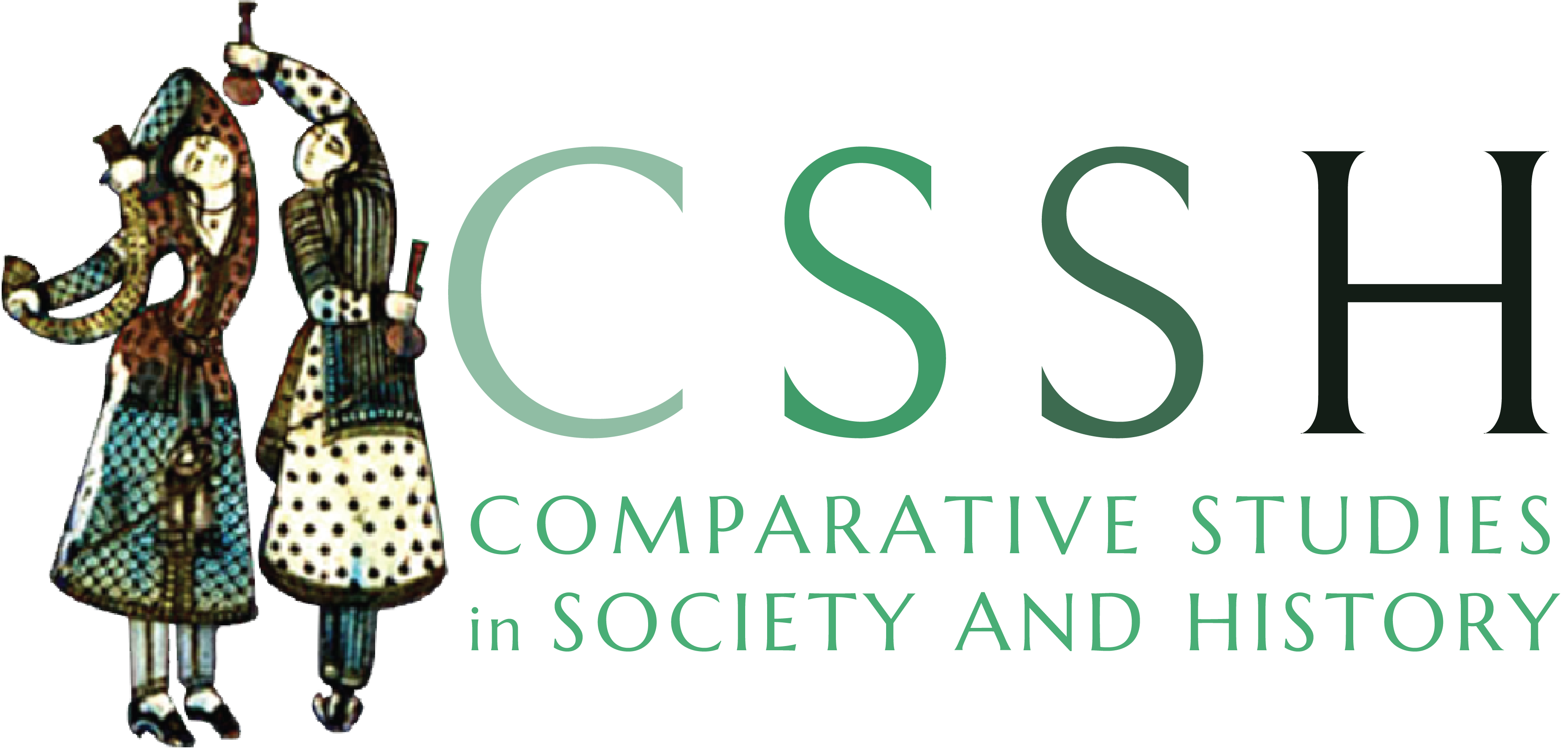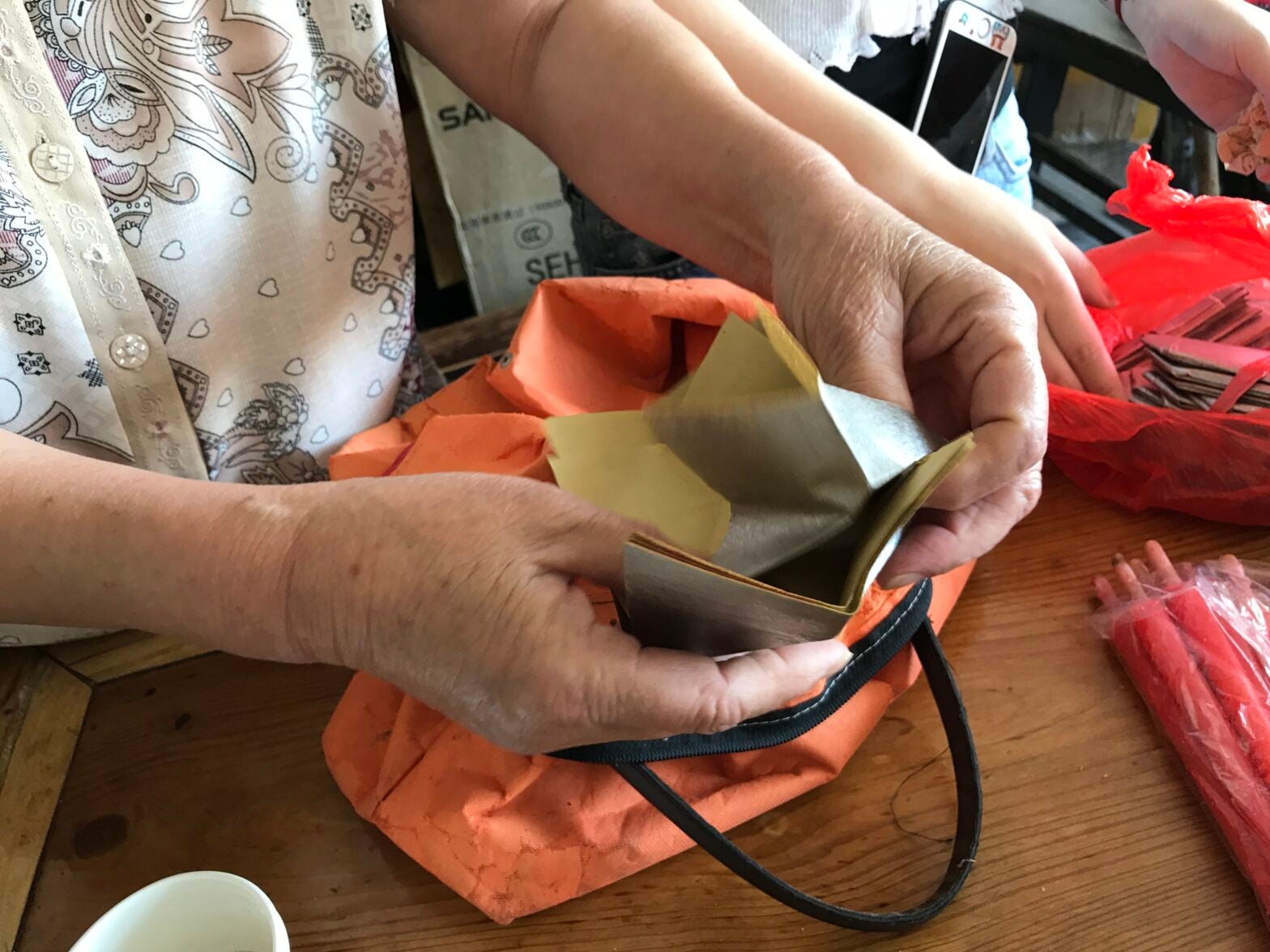In their CSSH essay, “Religion in the Folded City: Origami and the Boundaries of the Chronotope” (65-4, 2023), Robert P. Weller and Keping Wu “explore the complex interrelationships and workings of chronotopes through the idea of the fold,” which allows them to study what happens when different space-times touch and interact with each other. Their Behind the Scenes essay takes us into the past and the future of this work, as they describe the truly collaborative research and writing process that led to their insights and imagine ways to apply folding to contexts beyond what they analyze in the essay.
In May 2014, the two of us visited the Gaodian temple together for the first time. The head of the local Daoist Association showed us around, happily claiming credit for the construction of this and a few other temples dedicated to housing the local earth deities from village temples that had been destroyed in the recent process of rapid urban expansion. He proudly told us how they had gotten rid of all the original statues, which were disorderly, dirty, and crude. All of the new ones were “standardized (規範化),” a term he used over and over. He meant that the new figures were carved in the same style and at the same scale, and that only one was created for each god.

We noticed a lot of people coming and going from a room at the edge of the temple, which he had not shown us. “Don’t go in there,” he said. “Those are the ones we haven’t standardized yet; it’s just chaos in there.” We went in anyway, and found a room full of deity statues carved in the same style as the others in the temple, and just as new. They challenged the Daoist’s claims about the statues in two ways, though. First, according to the Daoist, each deity could only be represented by one physical statue in each temple, but these mostly duplicated deities that already stood in the main temple. And second, half of them were wearing eyeglasses, even though no deities in the Daoist canon ever wear glasses, and the Daoist dismissed this as “folk” stuff. At the time, we had no idea about the significance of that room, but it was already clear that we had discovered a kind of pocket inside the temple, a space within the space, which was at least partially outside the control of the Daoists. Later we would discover many similar spaces within and beyond the temple, including the altar beneath the staircase that we describe in our CSSH article.

We were intrigued by the promise of that space and began what turned out to be six years of collaborative fieldwork there. During the prior year, we had occasionally visited each other’s separate field sites in cities not far apart by high-speed rail. In the process, we discovered that our very different positionalities – one American and one Chinese, one older and one younger, one male and one female, along with the myriad of other differences that separate any two people – allowed us to learn more when we were together than either of us had managed separately, even from people we thought we knew well. For that reason, we determined that research for the new project would be truly collaborative, not through a division of labor, but through a joining of labor. We split up when we needed to, but undertook most of our interviewing and participation in rituals and other events together, allowing each of us to improvise off what the other was doing. In hindsight, such complementary positionalities helped ease the tension imposed on our interlocutors if they faced only one of us, because it allowed us to adjust flexibly to the different power relations and hierarchies present in different contexts. We wrote up field notes together as well, each remembering and noticing different details, and spent spare moments thinking out loud to each other.
This was the process that led us to the idea of folding, although we are no longer sure which of us first suggested it. It may well be that we were both thinking about it independently, because it seemed to grow out of those pockets of alternate space in the temple, the many similar spaces we discovered in other temples or in storage areas of housing complexes, and the entire world of villages, fields, shops, temples and social ties that urban expansion had bulldozed under the earth, but which continued to burst into the present through spirit mediums, informal offerings near lost sacred sites, or recalled memories. These were folds in time as well as in space.

We may have been drawn to folding because both of us, in our childhoods in different decades on different continents, had filled many hours with origami. That shared experience made us pay attention to the grandmas folding paper money at various ritual occasions during our fieldwork. And we were both taken with Hao Jingfang’s science fiction story “Folding Beijing (北京折疊),” which appeared just at that time.[i] The story is a simple class allegory, but its descriptions of how the city could fold in on itself to reveal an entirely new urban aspect inspired us to think about what it might mean to be a folded city. The fold also offered us a chance to dig more deeply into the problem of boundaries, which we had been thinking about together and separately.[ii] It probably helped that both of us, at different times, were students of Fredrik Barth, who highlighted the importance of boundary creation for the anthropological analysis of ethnic groups. We had been searching for ways to think about the boundaries between concepts, between groups, between self and other, between ontologies, or between chronotopes in ways that let us move beyond seeing boundaries simply as solid lines. The fold offered a promising new angle.
These thoughts soon pushed us to collaborative reading as well as collaborative fieldwork. After COVID-19 ended our joint research possibilities, we spent a summer (together with Zhao Xuyi, one of Weller’s PhD students) reading widely on time and on folding. Not all of this shows up in the article, of course, like Alfred Gell’s magisterial book on time, but everything we read shaped our thinking. Each of us had been struggling separately with Deleuze since we began to think about the fold, and our engagement with his work only began to bear fruit as we read in tandem. The writing process, too, was fully collaborative, at least the way we did it, so that we each feel we wrote the entire essay, and not just half of it – the ideas are just as interfolded with each other as the fieldwork was.

The CSSH editors asked us to think about whether the idea of folding suggested other topologies beyond the three we talk about in the essay: making the distant near, separating inside and outside, and interdigitating. Several useful comments during oral presentations of earlier versions raised the same issue. We certainly played with other ideas as we first developed our approach. There are origami models, for example, that can transform from one thing to another. Similarly, hexaflexagons fold in on themselves to reveal new faces, much like the city in “Folding Beijing.” The idea of non-lineal change built into such objects appeals to us, and we certainly think there is potential to develop the idea of folding further in that direction. Additionally, some things are folded so often or for so long that they tear apart along the folds. This suggests irreversible change, or rupture, through folding that might also prove fruitful to explore. Finally, we think the idea of unfolding might also be worth pursuing to deal with other kinds of change, like the East European processes of lustration, where histories of past collaboration become open. In a way, with each folding there is an unfolding, and the continuous movement seems to be a key characteristic of chronotopes. In any case, nothing could please us more than to see others take the idea further than we have.
[i] The English version is Jingfang Hao, “Folding Beijing,” trans. Ken Liu, Uncanny Magazine, 2015, https://www.uncannymagazine.com/article/folding-beijing-2/.
[ii] Weller, Robert P. and Wu, Keping. 2017. On the Boundaries between Good and Evil: Constructing Multiple Moralities in China. Journal of Asian Studies 76, 1: 47–67; Weller, Robert P. and Keping Wu. 2021. “Overnight Urbanization and Changing Spirits: Disturbed Ecosystems in Southern Jiangsu,” Current Anthropology 62, 5: 602–30.


